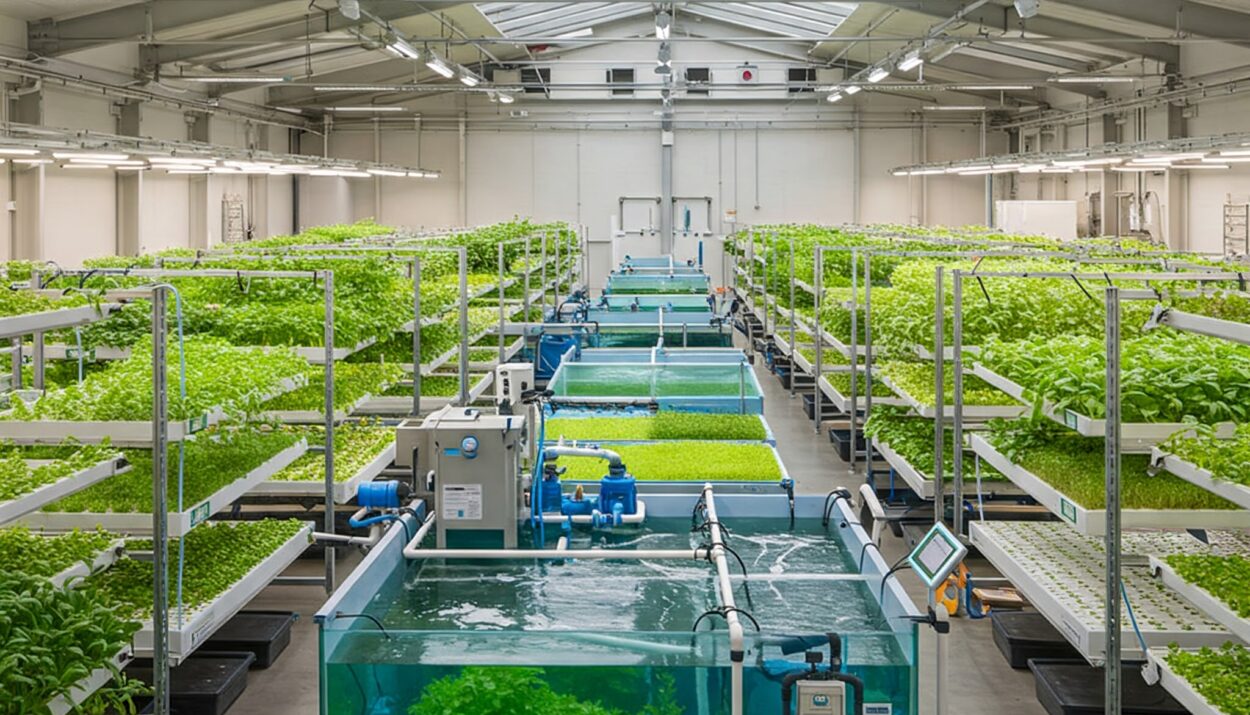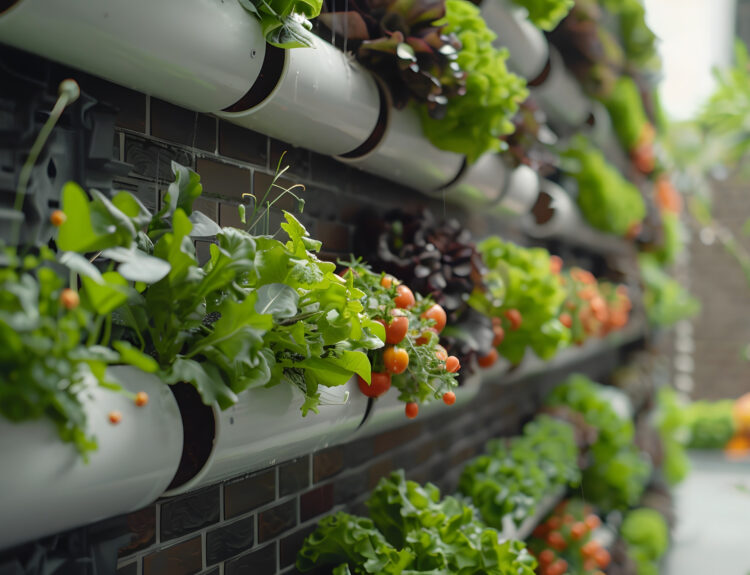Aquaponics is changing the way we farm and produce food. Aquaponics is a sustainable solution that works on fish farming (aquaculture) combined with growing plants in water (hydroponics). This method uses less water and doesn’t require any harmful chemicals thus maximizing space as well. If you are interested in how aquaponics works, what its challenges are, or even how to set up your very own aquaponics aquarium, you’re in the right place. So let’s delve into this intriguing and eco-friendly form of agriculture.
What is Aquaponics?
Essentially, aquaponics is a peaceful coexistence of plants and fish. The fish waste supplies the nutrients for the plants, and the plants help filter out the water which is pumped back into the fish tank. This cycle reduces waste, leading to lesser environmental impact compared to traditional farming methods. It’s a win-win for sustainability, and the options are tremendous for small-scale home systems or large-scale commercial operations.
Aquaponics is a great option for urban farmers or anyone who wants to grow food in a small area. Such a solution is cost-effective, giving speed to food security by providing chemical-free fresh food. It is also an opportunity to change our approach toward agriculture, particularly in regions plagued with soil degradation or water shortage.
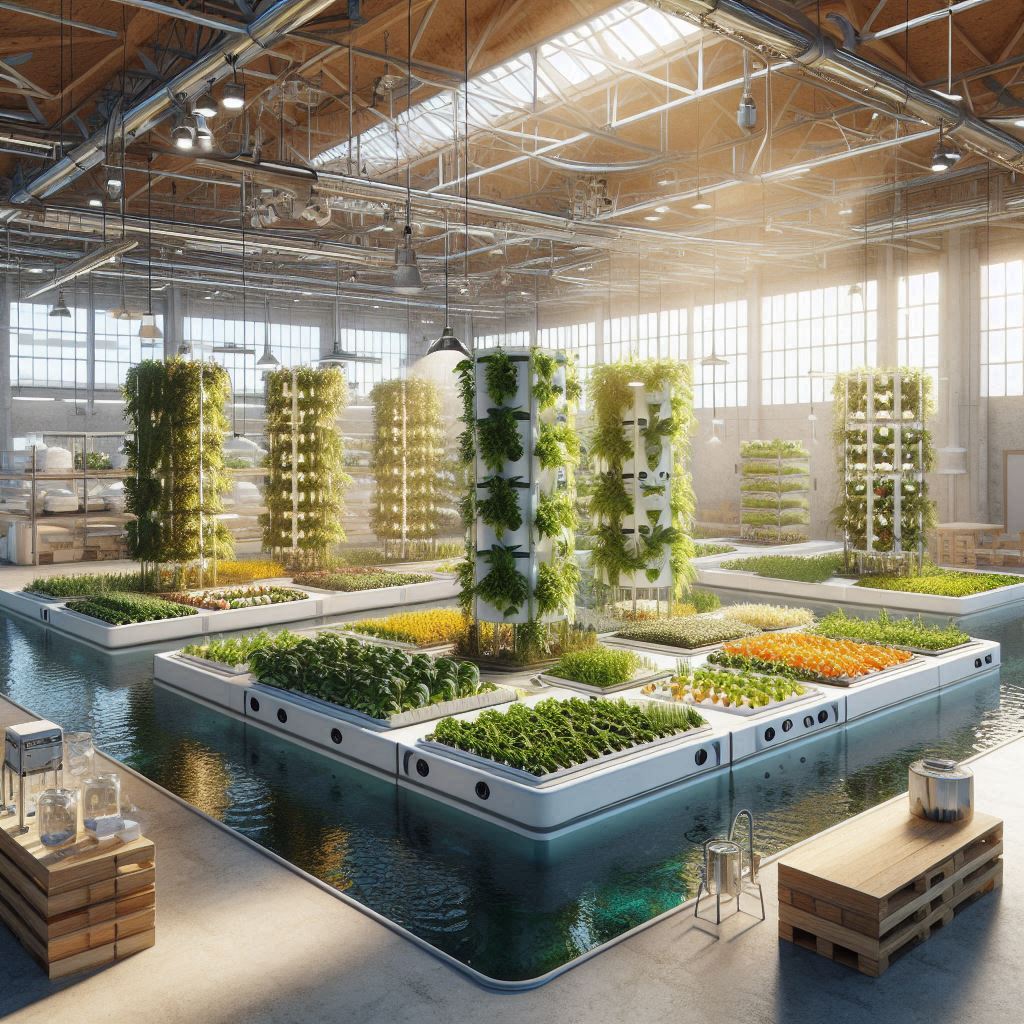
The Aquaponics Challenge: Overcoming Obstacles
Although aquaponics is a great reward there are downsides. It may take some trial and error to set up and maintain a successful aquaponics system. Perhaps the most important challenge is balancing the ecology of the system so that both the fish and the plants get what they need to grow. If the system is not adequately managed, issues like nutrient deficiencies, pH problems, and fish health can ensue. However, once you reveal the system dynamics, those challenges become more manageable.
The initial cost is another challenge. Constructing an aquaponics system, particularly a large-scale one, can be expensive. The technology is costly, but the long-term savings in water, fertilizers, and energy can far exceed the upfront costs. However, with planning and research, your aquaponics system could be one of the most affordable and successful systems that you implement.
Setting Up an Aquaponics Aquarium
Aquaponics aquarium setup goes further than filling the water with fish and plants. You do have to try and get this balance going and the fish create the nutrients and the plants filter the water. The first step is picking the right type of fish. Tilapia and goldfish, for example, are common, though some people might experiment with different species, depending upon their preference and where they live.
Next, you’ll have to choose what type of plants to grow. Whether it’s leafy greens like lettuce, spinach, and kale or herbs, tomatoes, and even strawberries, aquaponics systems can grow anything. Your climate and the type of system you’re building will determine what plants you choose.
A filtration system should be set up to remove solid waste so that the tank’s water remains clean for the Plants and the fish. Depending on the system, you may have to use mechanical filters, biological filters, or even a separate grow bed to help convert fish poop into food for the plants.
What are the Types of Aquaponics Systems?
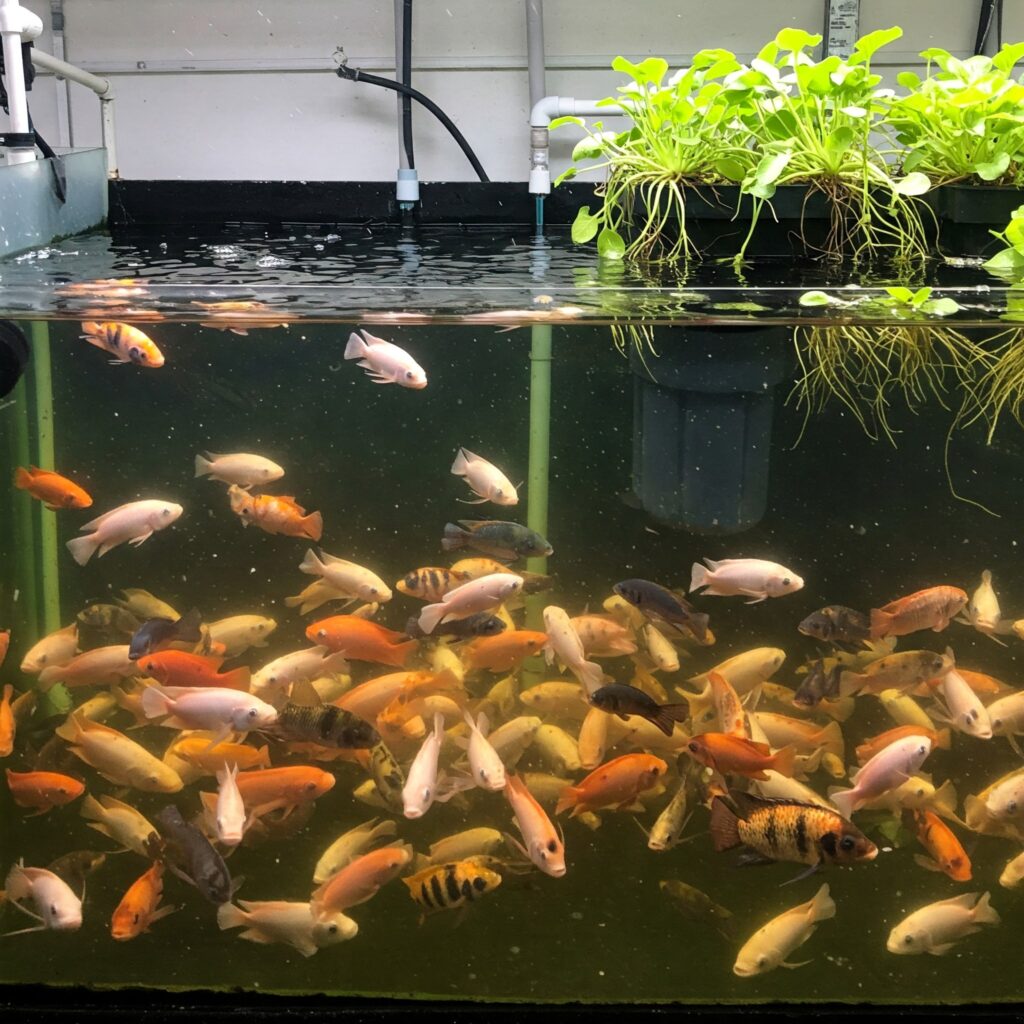
There are different types of aquaponics systems you can choose from based on your space, budget, and goals. The types are as follows:
- Media-based Aquaponics
These systems grow plants like gravel or clay pebbles in a solid medium. The media is a catchment to trap solids, it also provides an ideal environment for roots of the plants to grow. This system is great for novices and versatile enough to grow all different types of plants.
- Nutrient Film Technique (NFT)
NFT systems use a sloped channel to deliver a thin film of water over the roots of plants, wherein they absorb the nutrients. If controls managing the water flow rate and nutrient level are accurate and on the money, it is great for growing smaller type plants such as herbs.
- Deep Water Culture (DWC)
In DWC, plants float on a layer of water, with their roots in the nutrient-rich solution. This works well for larger plants and can save on water usage, but it needs to have enough oxygen in the water to keep the fish and plants alive.
How to Maintain an Aquaponics System
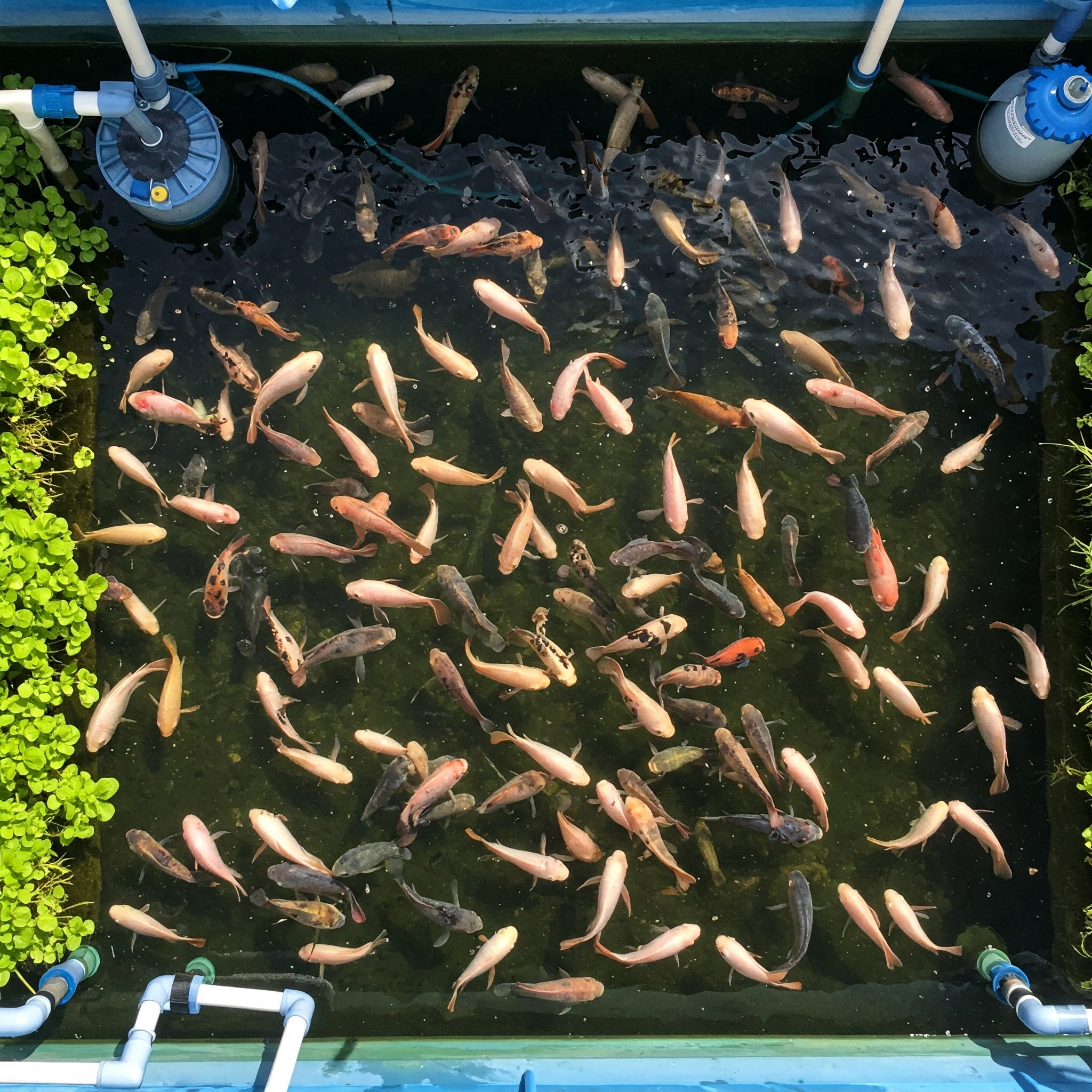
Aquaponics systems aren’t overly complicated, but they do need some thoughtful attention to keep them up and running. Here are some important tips to keep your system healthy:
- Monitor water quality: Test water for pH, ammonia, nitrite, and nitrate levels regularly. This is important for the well-being of your fish and your plants.
- Feed your fish: Make sure you are feeding your fish a proper diet. That waste is vital for growing plants, but you should also ensure they receive the right nutrients.
- Check for pests: While aquaponics systems generally require fewer pesticides than traditional farming, pests can still be an issue. Look for common pests and deal with them before they become a serious problem.
What are the Benefits of Aquaponics?
Aquaponics has potently clear and abundant benefits. Here are some of the reasons you should also choose this farm method:
1. Water Efficiency
Water conservation is one of many reasons to consider aquaponics. Conventional farming practices can happily waste huge quantities of water to evaporation, runoff, and over-irrigation. Conversely, in aquaponics systems, water is recycled, and thus the system is a lot more efficient. The system uses water repeatedly, while the plants filter and purify it, so it doesn’t need to be changed out as frequently.
2. Reduced Use of Fertilizers
As fish waste holds the needed nutrients for plants, synthetic fertilizers are unnecessary. This means aquaponics is an eco-friendly alternative to traditional farming, where chemical fertilizers can flush into local water supplies and pollute them.
3. Space Efficiency
Aquaponics enables farming in areas that would otherwise not be suitable for agriculture. It is perfect for urban farming, or where arable land is at a premium, you can produce a large amount of food from a small area.
Aquaponics and the Future of Food
Aquaponics is the future of food – and that future is here. With sustainability very much an in-demand priority, aquaponics provides a pragmatic solution to both food security and environmental challenges. Whether as an aspiring urban farmer or as a hobbyist aiming to set up an aquaponics aquarium at home, this system can potentially offer a constant source of fresh, nutritious food with low outside environmental impact.
Conclusion
Overall, aquaponics is an incredibly eco-friendly, effective method of growing food that brings together aquaculture and hydroponics to form a self-sustaining, closed-loop environment. It has numerous advantages such as water conservation, fertilizer consumption, and efficiency. Aquaponics is not without its challenges, but the benefits of growing your food in an aquaponics system far outweigh the effort. If you want to explore aquaponics, take it slow, make mistakes, learn along the way, and enjoy the many perks of aquaponics.
Learn more about sustainable farming here
Related post:





